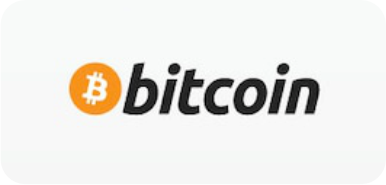The commodities market is one of the most dynamic sectors in the global financial system that gives opportunities for investment, trading, and risk management. The commodities market provides a platform for buyers and sellers to exchange tangible goods such as gold, crude oil, agricultural products, or metals.
In this article, we will break down what the commodities market is, how it works, the types of commodities available for trading, key factors influencing commodity prices, and why this market is vital for the global economy.
What is the Commodities Market?
The commodities market is a physical or virtual marketplace where raw materials or primary products are bought, sold, or traded. Unlike stocks or bonds, commodities are tangible assets, including energy (like crude oil and natural gas), metals (such as gold and silver), agricultural products (like wheat, coffee, and cotton), and livestock.
There are two primary types of participants in the commodities market:
Producers and consumers
Producers use the market to sell their goods, while consumers buy raw materials for production.
Investors and speculators
These participants do not deal with the physical goods but trade contracts to profit from price changes.
Types of Commodities
Commodities can be broadly divided into four main categories: energy, metals, agriculture, and livestock. Each category offers unique opportunities and risks for traders and investors.
1. Energy Commodities
Energy commodities, such as crude oil, natural gas, and coal, are some of the most heavily traded goods in the world. These commodities are essential for transportation, electricity generation, and industrial processes. The demand for energy commodities often fluctuates based on geopolitical events, technological advancements, and changes in global consumption patterns. Key energy commodities include:
- Crude Oil: The backbone of the energy market, with benchmarks like Brent Crude and WTI Crude dominating global trading.
- Natural Gas: Used in heating, electricity, and industrial applications.
- Coal: Primarily used for electricity generation, although its use has declined in favor of renewable energy.
2. Metal Commodities
Metal commodities include both precious and industrial metals. Precious metals like gold and silver are often used as safe-haven assets during times of economic uncertainty, while industrial metals such as copper and aluminum are critical for construction and manufacturing. Examples of metal commodities:
- Gold: A store of value and hedge against inflation.
- Silver: Used in electronics, jewelry, and industrial applications.
- Copper: Essential for electrical wiring and construction.
3. Agricultural Commodities
Agricultural commodities, also known as soft commodities, include crops and livestock. These commodities are vital for food production and other industries, such as textiles and biofuels. Examples of agricultural commodities:
- Wheat and Corn: Staples for global food supply.
- Coffee and Cocoa: Major cash crops in many developing countries.
- Cotton: A critical raw material for the textile industry.
4. Livestock Commodities
Livestock commodities include live cattle and lean hogs, which are essential for meat production. These commodities are influenced by factors such as weather, feed prices, and global demand.
How the Commodities Market Works
The commodities market operates through two primary methods: spot markets and derivatives markets.
Spot Markets
In the spot market, commodities are traded for immediate delivery. Buyers and sellers exchange physical goods, and the prices are determined by current market conditions. Spot trading is common for agricultural products, where timely delivery is essential.
Derivatives Markets
The derivatives market allows traders to buy and sell contracts based on the future price of a commodity. The two most common types of derivatives are futures contracts and options contracts:
- Futures Contracts: Agreements to buy or sell a commodity at a predetermined price on a specific future date.
- Options Contracts: Contracts that give traders the right, but not the obligation, to buy or sell a commodity at a set price before a specific date.
Commodity exchanges, such as the Chicago Mercantile Exchange (CME) and London Metal Exchange (LME), facilitate trading in these markets.
Factors Influencing Commodity Prices
Commodity prices are highly volatile and influenced by a range of factors. Understanding these factors can help you anticipate market trends and make informed trading decisions.
1. Supply and Demand
Supply and demand are the primary drivers of commodity prices. For instance, a drought in a major wheat-producing region can reduce supply, causing prices to rise. Conversely, an oversupply of oil can lead to lower prices.
2. Geopolitical Events
Geopolitical tensions, such as conflicts in oil-producing regions, can disrupt supply chains and lead to price spikes. Similarly, trade policies and sanctions can impact the availability and cost of commodities.
3. Currency Fluctuations
Commodities are typically priced in U.S. dollars. When the dollar strengthens, commodities become more expensive for foreign buyers, potentially reducing demand and lowering prices.
4. Weather and Natural Disasters
Weather conditions and natural disasters significantly affect agricultural commodities. Hurricanes, droughts, and floods can disrupt production and transportation, leading to price fluctuations.
5. Technological Advancements
Technological developments in extraction, production, and transportation can increase the efficiency of commodity supply chains, affecting prices.
Why is the Commodities Market Important?
The commodities market plays a crucial role in the global economy for several reasons:
- Price Discovery: It helps establish transparent and fair prices for raw materials.
- Hedging Risks: Producers and consumers use the market to hedge against price fluctuations. For example, a farmer can lock in a future price for their crops to protect against falling prices.
- Economic Indicators: Commodity prices often serve as indicators of economic health. Rising oil prices, for instance, can signal increasing demand and economic growth.
- Investment Opportunities: The commodities market offers investors a way to diversify their portfolios and hedge against inflation.
Conclusion
In conclusion, producers, consumers, and investors have really made the most of commodities market to create and build wealth in financial markets. Of course, these commodities market offers something for everyone. As you explore this market further, don’t invest blindly, remember to stay updated on market trends and economic factors that influence commodity prices.
Frequently Asked Questions
What are the main types of commodities?
- The main types of commodities are energy (crude oil, natural gas), metals (gold, silver, copper), agriculture (wheat, corn, coffee), and livestock (cattle, hogs).
How can I invest in the commodities market?
- You can invest in the commodities market through futures contracts, options, ETFs, mutual funds, or by buying physical commodities like gold.
What factors influence commodity prices?
- Commodity prices are influenced by supply and demand, geopolitical events, currency fluctuations, weather conditions, and technological advancements.
What is the difference between spot markets and derivatives markets?
- In spot markets, commodities are traded for immediate delivery. In derivatives markets, traders buy and sell contracts based on future prices.
Why is the commodities market important?
- The commodities market facilitates price discovery, hedges risks, provides investment opportunities, and serves as an economic indicator.










